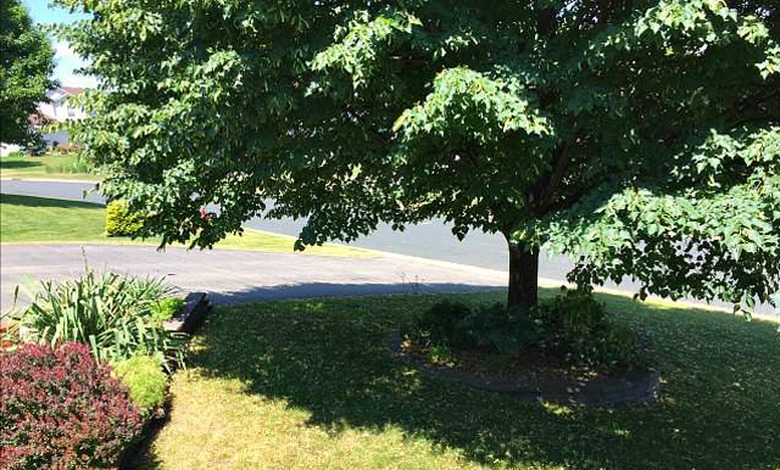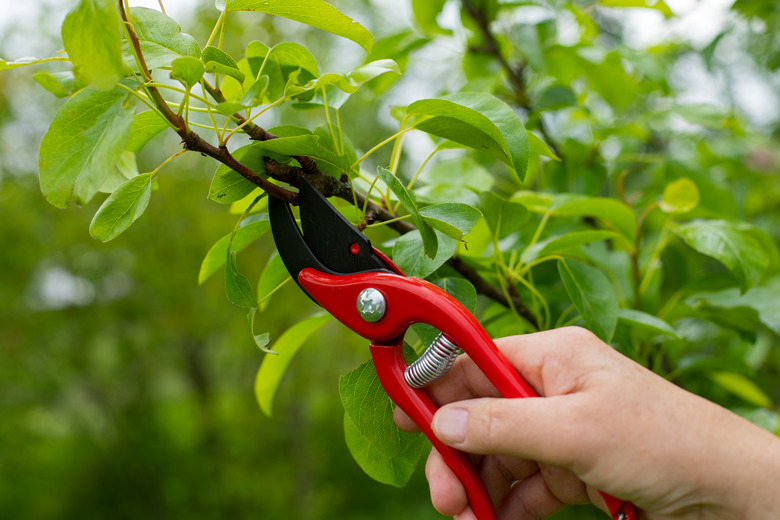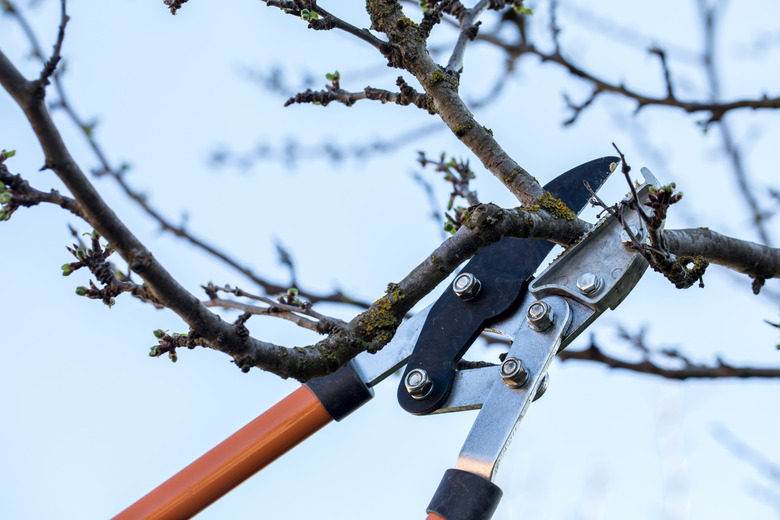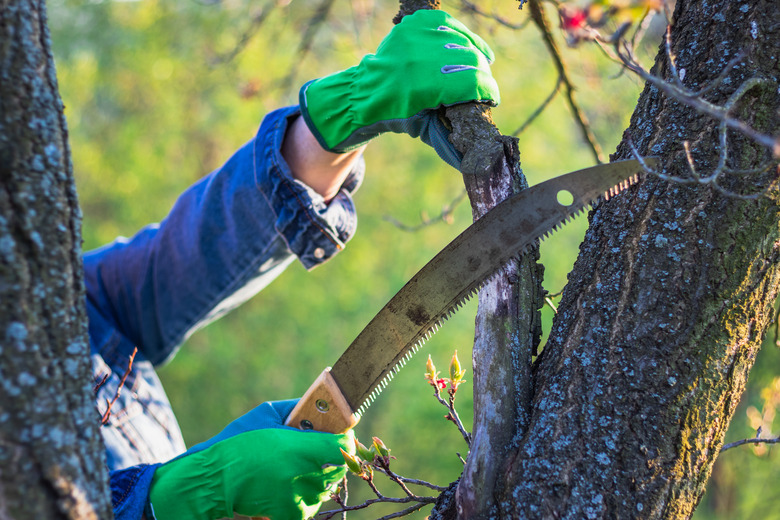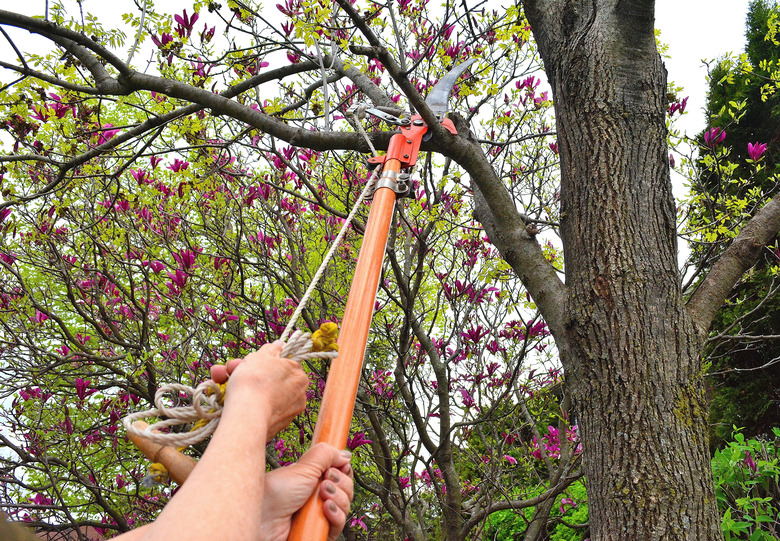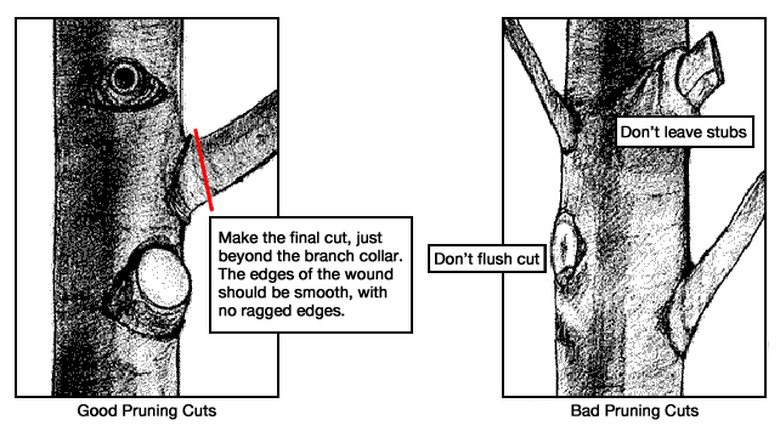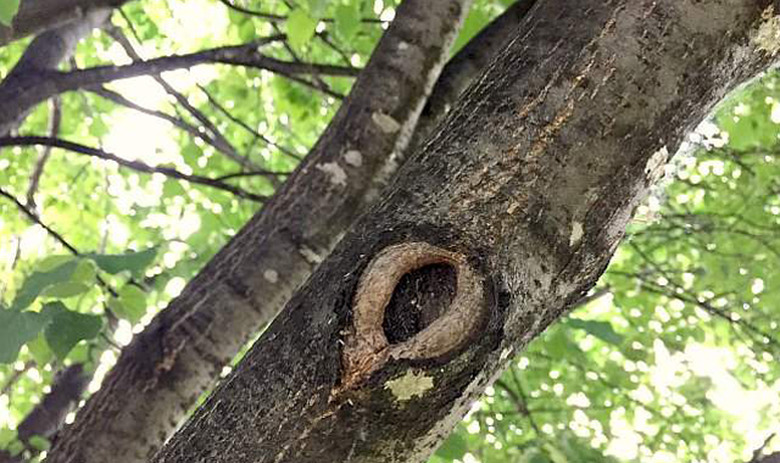How And When To Prune A Tree
In the forest, most trees exhibit the same traits that, in a more domestic setting, would warrant pruning. Branches shoot out at eye level or lower. Trunks fork in ways that foreshadow future instability. The crown grows so thick that light can't penetrate, air can't circulate, and, in the event of heavy wind, the tree may catch too much of it and become uprooted. Branches break and fall off. Their stubs decay and admit disease. Sometimes the trees die prematurely, but in the forest when a tree dies or is blown down, another tree takes its place.
In a domestic setting, losing a tree means a big change to our environment and its aesthetics—a loss of shade and shelter, and less habitat for wildlife. In addition, a weakened or vulnerable tree, or one with unchecked lateral branches that pose a threat to your home or your neighbor's, can represent a potential liability.
Timely pruning can give your trees their soundest, most aesthetic shape, and it can forestall problems stemming from decay, disease, and susceptibility to wind damage. If your trees are large and fully mature, pruning them is probably best left to an experienced arborist who has the equipment and the know-how to prune correctly and safely. Know your limits.
When trees are young, you have the opportunity, with a little judicious pruning that you can accomplish with basic equipment, to shape and guide their growth so as to mitigate the need for extensive pruning when they are larger.
When Is the Best Time to Prune Trees?
When Is the Best Time to Prune Trees?
There are two ways to answer that question. The first is largely universal for all species of trees: The best time to prune them is when they're young—when you can influence their ultimate shape and when pruning requires minimal tools.
The second, seasonal answer for mature trees is that most species are best pruned when they are dormant. The actual time will vary with your regional climate. In regions with distinct seasons, tree pruning is best done during the winter. To make a finer distinction, in regions with freezing winter temperatures, the optimal time to prune is in late January to mid February, when most of winter is past but before the spring flush of growth. Pruning at this time minimizes the time that the exposed cut can be damaged by temperature extremes and sets it up for rapid healing in the spring. It's also a time when insects and plant diseases are inactive.
But for a number of reasons, pruning when the tree is dormant may not be practical. For example, it can be difficult to distinguish which branches are dead and where the foliage is over-congested when all of the leaves are off. And when a dead or broken limb poses a hazard, its removal takes precedence over ideal timing. And of course the task of pruning is pleasanter when the temperature is milder. If you can avoid pruning during the spring growth period, you can prune just about any other time without harming the tree. There are exceptions, of course. Avoid pruning oak trees (Quercus spp.) from spring to midsummer, when oak wilt may be active. For flowering trees like magnolia (Magnolia spp.) that bloom early on the previous year's growth, it's best to prune as soon as they finish blooming.
Tip
Basic Tools for Tree Pruning
Assuming you are going to be pruning young trees, small trees and smaller branches (less than four inches in diameter) on larger, established trees, the tools you need will be modest. With so few tools to buy, it's worthwhile to choose quality equipment.
Hand shears: For small (up to 1/2 inch in diameter) branches within arm's reach, use hand shears. The shears come in two styles: scissors-type with bypassing blades and anvil-type, with a single blade that cuts against a flat bar. The pros generally prefer the scissors-type shears.
Lopping shears: Handy for quickly cutting branches too large for hand shears (up to 1 1/2 inches) and further out of reach, lopping shears have long handles and heavier cutting blades. The scissors-type blades are preferred here, as well. Look for lightweight shears with sturdy handles.
Pruning saws: With a slightly curved, pointed blade and coarse, fast-cutting teeth that cut on the pull stroke, pruning saws are ideal for cutting accessible branches larger than 1 1/2 inches.
Pole pruners: For branches out of reach, a pole pruner comes in handy. The typical pole pruner has an extendable pole topped with a pruning saw for larger branches and also a lopping mechanism operated via a pull rope for quickly severing smaller branches. Look for a pole pruner with a rigid, lightweight pole.
Deciding What to Prune
Deciding What to Prune
Some pruning decisions are obvious: dead or broken or diseased limbs, low branches that interfere with mowing or other activities around the tree, foliage that blocks critical visibility, especially near roadways. Other pruning choices are more aesthetic, although there are general principles you can follow to make those choices easier and their outcome more satisfactory. When you prune, you are influencing the shape of a tree, encouraging a robust, balanced shape and eliminating excess low-vigor foliage that stifles airflow in the tree's crown and competes with more primary branches for vital sunlight.
- To begin, open up the crown a little by pruning away small unnecessary branches.
- Take out water sprouts (small branches growing straight up), branches growing downward and ones growing inward toward the trunk.
- Where two branches cross, eliminate the one that least conforms to the tree's ideal shape. Likewise, when two branches closely compete, select the best one and remove its rival.
For many trees, the ideal is to maintain a single dominant vertical leader that defines the tree's upward growth. Take out any vertical stems that might diverge and compete with that leader. At the tip of the leader and at the tip of each branch is a terminal bud that not only promotes growth at the tip but also produces hormones that inhibit the sprouting of buds further down the branch until the branch has grown long enough that the influence of the terminal bud is diminished. Another way the bud-suppression function of the terminal bud can be muted is if you remove it with some portion of the branch in a superficial attempt to shape the tree.
Cutting off a large branch or trunk and leaving behind a stub is a practice called heading or topping, pruning methods that typically are inappropriate and ill-advised. Cropping the terminal bud releases the inhibitions on lateral and latent buds along the branch, resulting in a profusion of unwanted shoots. If you must remove part of a large branch, look for a lateral growth bud that is oriented in the direction you wish the branch to grow and make your cut starting at the top about 1/4 inch from the bud and angling down to just below the bud. That bud will then become the new terminal bud.
How to Prune Large Branches
How to Prune Large Branches
It's preferable to remove the whole branch rather than heading it, and certainly whenever you will remove more than half of a branch's foliage, you should take the whole branch. Where each branch joins the trunk, there is a slight swelling known as the collar. The collar contains chemicals that assist in the healing of a cut limb. It's important, therefore, that your final cut will be just beyond this branch collar.
Avoid Unintentional Damage When Pruning Large Limbs
Avoid Unintentional Damage When Pruning Large Limbs
A cut branch can be heavy and break away before the cut is finished, tearing the bark and damaging the tree. For that reason, larger limbs are properly cut in three steps:
- Make a cut up from the bottom about one third of the way through the limb and a foot from the trunk.
- About an inch further out on the limb, make a cut downward until the limb separates.
- Finally, cut off the remaining stub, taking care to preserve the branch collar.
Tip
Pruning Evergreens
In general, evergreens (conifers) should be pruned when young, if at all, to establish a proper shape and then left alone, except to remove dead branches or to raise the bottom of the crown. Different types of evergreens have distinct growth habits that determine the best time and extent of pruning:
- Pines (Pinus spp.) add new growth at the branch tips each spring and then stop for the season. Pruned branches will not add growth until the next spring. Removing more than a single year's growth can permanently impair a pine branch's ability to grow.
- At the tip, choose a single dominant leader and prune away any competing leaders.
- Spruces (Picea spp.) and firs (Abies spp.), unlike pines, have lateral buds that will take over if the terminal buds at the branch tips are removed.
- Cedars (Cedrus spp.), arborvitae (Thuja spp.) and hemlocks (Tsuga spp.) have numerous lateral buds that can foster new growth and they grow continuously throughout the season. These trees can be pruned until late summer.
